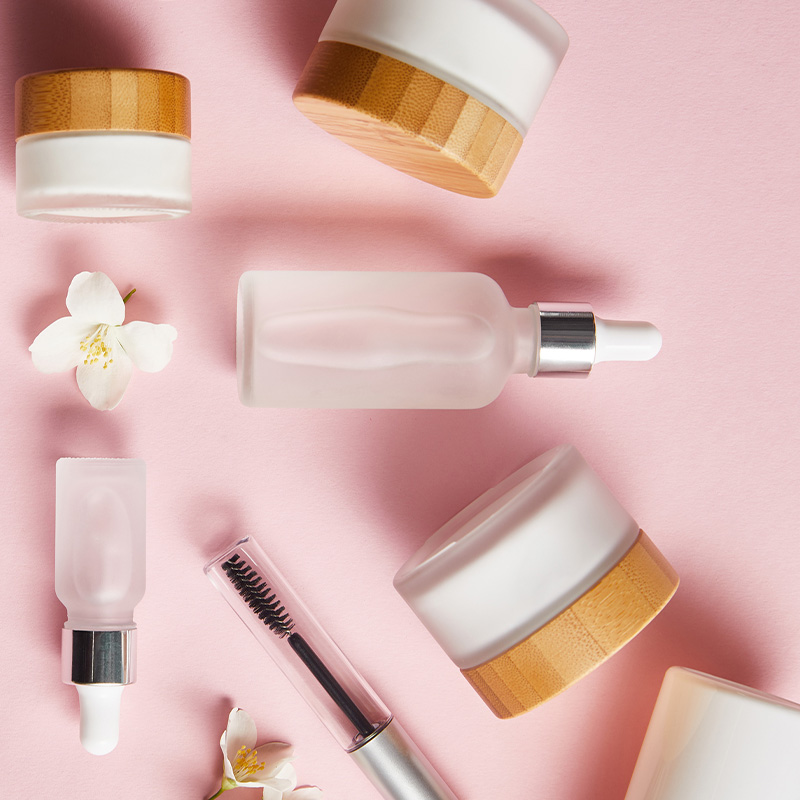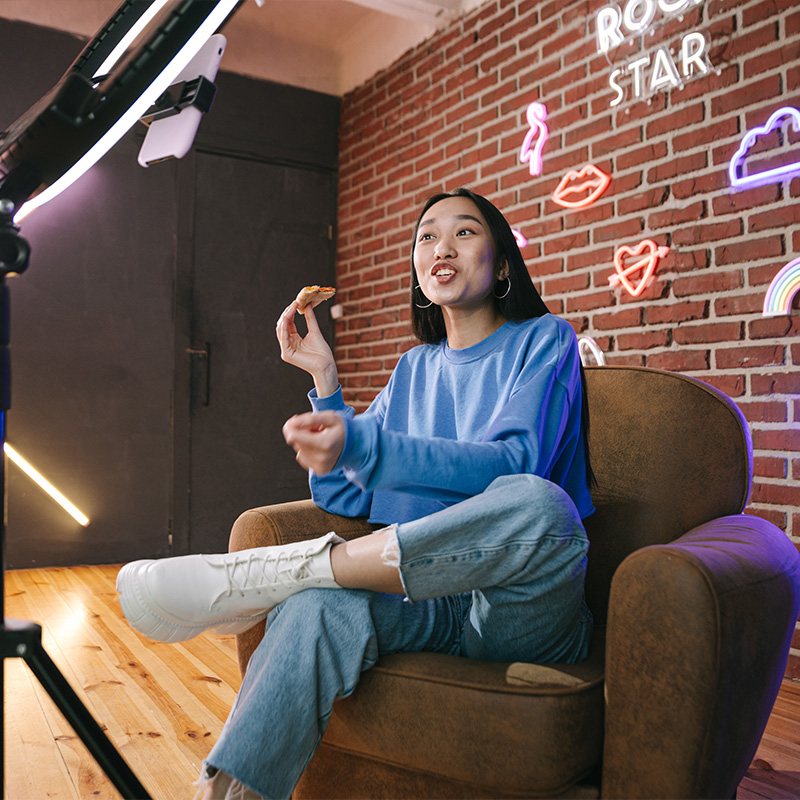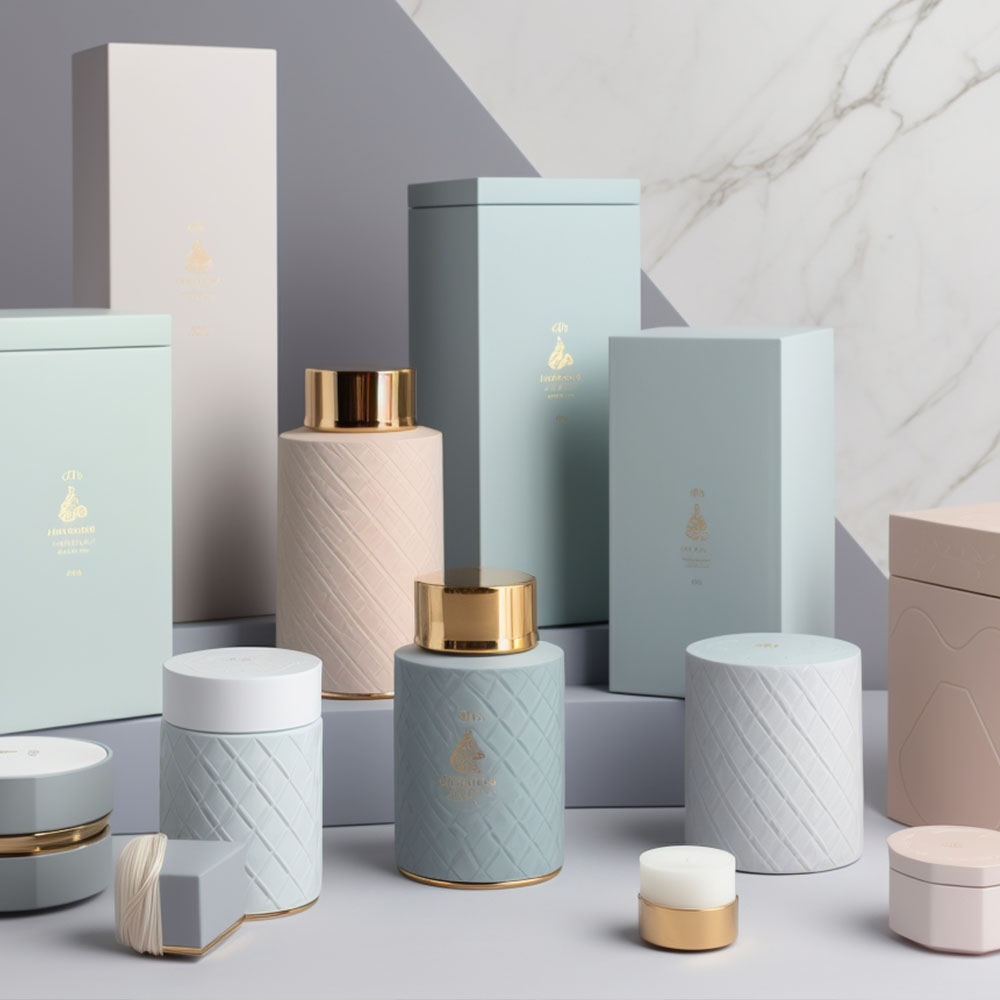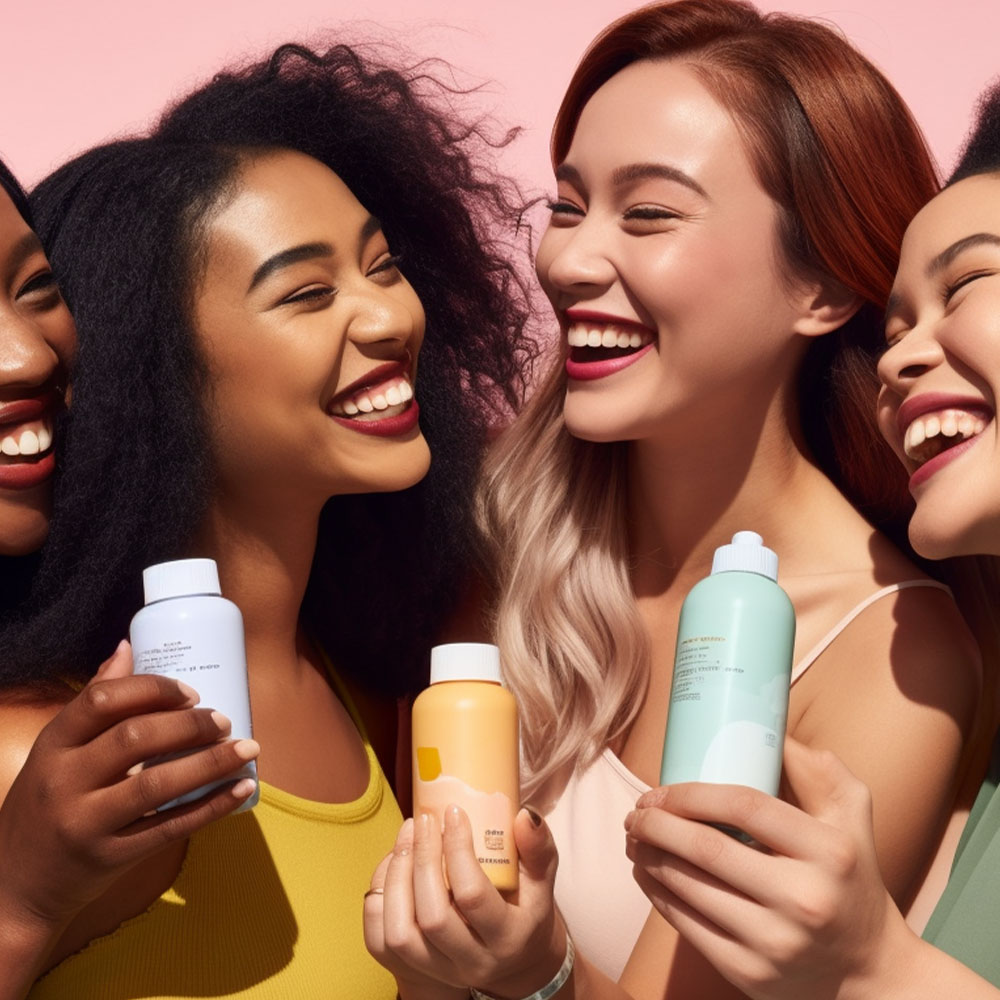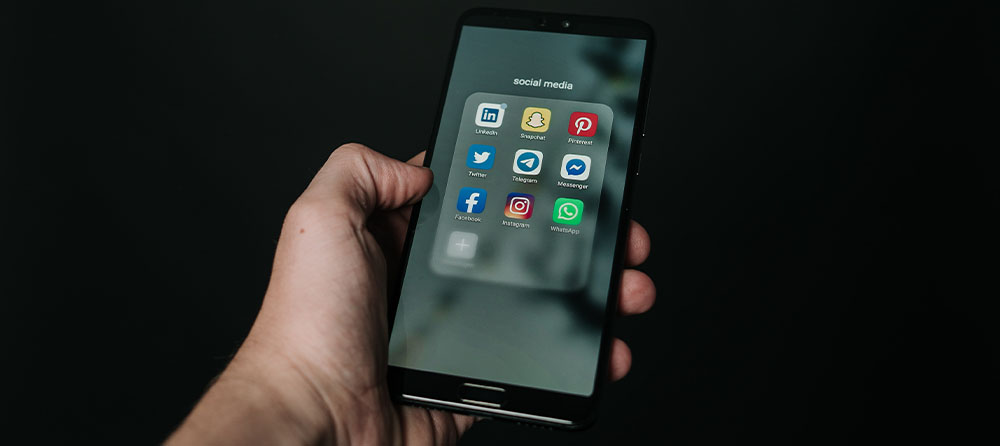
Hey there, beauty brands! Are you struggling to gain traction on social media? With over 3.6 billion people using social media worldwide, your brand must have an online presence that stands out in a crowded market. But fear not – mastering social media marketing is easier than you think.
First and foremost, let’s discuss the top platforms for reaching your target audience. Instagram has become the holy grail of beauty brands, with its visually-driven platform perfect for showcasing products and tutorials. TikTok has quickly risen as a powerhouse in the industry due to its short-form video content and ability to go viral overnight. And don’t forget about Pinterest – a search engine disguised as a social network where users come for inspiration and ideas. By strategically utilizing these platforms, your brand can reach more potential customers than ever. So buckle up and get ready to master social media marketing like never before!
Instagram: The Holy Grail Of Beauty Brands
Instagram has become the ultimate platform for beauty brands to showcase their products, engage with followers, and build a loyal following. With over one billion active monthly users, Instagram provides an unparalleled opportunity for beauty brands to reach a massive audience.
Creating engaging content is crucial on Instagram as it helps attract new followers and retain existing ones. Visuals are everything in the beauty world, so make sure your feed is visually stunning by posting high-quality images highlighting your products’ features. Experimenting with different formats like carousels, stories, and reels can add variety to your page and help keep your audience engaged.
Building a loyal following requires consistency and authenticity. So make sure you post regularly at optimal times when your target audience is most active online. Also, remember that Instagram’s algorithm favors accounts that connect with their followers through meaningful interactions like commenting or reposting user-generated content.
Lastly, don’t underestimate the power of influencer partnerships on Instagram. Collaborating with relevant influencers who share similar values can help amplify brand awareness and provide valuable social proof to potential customers.
By mastering these strategies on Instagram, beauty brands have a significant advantage in growing their business and reaching new audiences. So embrace this platform’s creativity, and prepare to take your brand’s digital presence to the next level!
Tiktok: Rising As A Powerhouse In The Industry
TikTok has quickly become one of the most popular social media platforms among Gen Z and Millennial audiences. With over 1 billion active users worldwide, TikTok offers an opportunity for beauty brands to connect with their target market through engaging content that resonates with them.
One of the reasons why TikTok is becoming increasingly popular is because it allows users to showcase their creativity and express themselves in unique ways. Beauty brands take advantage of this by creating viral videos highlighting current TikTok trends, such as beauty challenges or makeup tutorials set to music.
To succeed on TikTok, beauty brands must stay current with emerging trends and create content aligning with their brand values. This means experimenting with new formats and leveraging user-generated content to build trust and authenticity with their audience.
Overall, TikTok presents a massive opportunity for beauty brands looking to reach younger demographics. By staying ahead of the latest trends and creating compelling video content, they can tap into the platform’s massive user base and drive engagement across all channels without spending large sums of money on traditional marketing efforts.
Pinterest: A Search Engine Disguised As A Social Network
Have you ever heard the phrase “a picture is worth a thousand words”? Well, Pinterest takes that statement to a whole new level. With over 400 million users and counting, Pinterest has become one of the internet’s most potent visual search engines. It’s like Google Images with an added social aspect – allowing users to share images they love with their followers.
But what does this mean for beauty brands? Simply put, it means there’s no better platform for visual storytelling than Pinterest. By creating visually stunning boards filled with your products and inspiration, you can capture the attention of potential customers in a way that no other social media platform allows.
To make sure your brand stands out on Pinterest, there are two key strategies you need to focus on: SEO and visual storytelling. First, let’s talk about Pinterest SEO – or how to optimize your content so it appears at the top of relevant searches. This involves using keywords in your board titles and descriptions, adding alt text to your pins, and including links to your website wherever possible.
Now onto visual storytelling! One great way to tell a story through visuals is by grouping certain products or themes into boards. For example, if you have a line of skincare focused on hydration, create a board titled “Dewy Skin Essentials” where you showcase all those products alongside inspirational photos featuring dewy complexions.
Pinterest provides endless opportunities for beauty brands to improve their social media game. By utilizing SEO tactics and solid visual storytelling techniques, you’ll be able to captivate audiences seeking inspiration and information related to beauty.
So why wait? Start pinning today and watch as more people discover (and purchase!) your impressive product lineup.
Identifying Your Target Audience
Creating a successful social media marketing campaign for your beauty brand can be challenging. Identifying your target audience is one of the most critical steps in this process. Creating personas representing your ideal customer can help you tailor your messaging and content to their needs and interests.
When creating these personas, it’s essential to identify pain points that your target audience may have. These could include anything from skin concerns to budget constraints. By understanding these pain points, you can create content that addresses them directly, making your brand more relatable and trustworthy.
Consider conducting surveys or focus groups to gather information about your target audience. You can also analyze data from your social media accounts to see who engages with your content and what types of posts resonate with them.
Once you have identified your target audience and their pain points, use this information to shape your social media strategy. Create content that speaks directly to their needs and interests, using language and visuals that will appeal specifically to them. Doing so will strengthen the connection between your brand and its followers while attracting new customers who share those values.
Remember: social media marketing for beauty brands is an ongoing process that requires constant attention and effort if you want to succeed. Keep refining your approach over time as you learn more about your audience’s preferences and behaviors, testing out new strategies regularly until you find the perfect formula for success.
Crafting A Compelling Brand Story
Now that you have identified your target audience, it’s time to focus on developing authenticity and building emotional connections with them. Again, crafting a compelling brand story is the key to achieving this goal.
Your brand story should authentically represent your values, mission, and vision. It should reflect who you are as a company and what sets you apart from others in the industry. To develop authenticity, start by understanding why you started your business in the first place. This will help you create a narrative that resonates with your audience personally.
To build emotional connections with your target audience, ensure your brand story evokes emotions such as joy, inspiration, or empathy. Share stories about how your products have positively impacted people’s lives or showcase real-life examples of how your brand has made a difference. Doing so will show consumers that there’s more to your business than just selling products – it’s about making a positive impact.
Remember: Your brand story isn’t static – it can evolve. As new trends emerge and consumer preferences change, don’t be afraid to adapt and update your narrative accordingly. The most successful brands are those that stay true to their core values while remaining flexible enough to meet changing demands.
By crafting a compelling brand story that authentically reflects you as a beauty brand and builds emotional connections with your target audience, you can establish yourself as a leader in the industry while forging lasting relationships with customers who share your values and beliefs.
Leveraging User-Generated Content
Leveraging User-Generated Content (UGC) is a powerful way for beauty brands to connect with their audience and showcase the effectiveness of their products. UGC refers to content created by users that promote your brand, such as reviews, photos or videos. By curating this content on social media platforms like Instagram or Facebook, you can create an authentic connection with your customers while reaching out to new audiences.
One practical approach is incentivizing participation through contests or giveaways. For example, you could run a contest asking customers to share how they use your product creatively using your hashtag. Not only does this encourage engagement, but it also generates excellent content for you to feature on your page. Plus, everyone loves the chance to win something!
Another strategy is UGC curation – showcasing images or testimonials from happy customers who love your brand. This adds credibility and authenticity to your marketing efforts and helps build trust with potential buyers. Ensuring that all the content you curate aligns with your brand values and reinforces what sets you apart is essential.
Ultimately, leveraging user-generated content allows beauty brands to reach wider audiences and boost their online presence more organically. By encouraging participation and highlighting customer experiences, you demonstrate that you value them beyond just making sales. Keep experimenting with different approaches until you find what works best for your brand – endless possibilities!
Influencer Partnerships: The Key To Success
If you want to take your beauty brand’s social media marketing to the next level, partnering with micro-influencers is the key to success. These individuals have a smaller following than mega influencers but are highly engaged and influential within their niche. By collaborating with them, you can tap into their loyal fan base and increase your reach exponentially.
When negotiating influencer contracts, it’s important to remember that these partnerships should be mutually beneficial. Micro-influencers are often looking for opportunities to grow their brands, so offering them exposure on your platform or providing exclusive discounts for their followers can help sweeten the deal. Be sure to clearly outline expectations and deliverables in the contract to avoid misunderstandings later.
To truly make an impact with influencer partnerships, think beyond just sponsored posts or product reviews. Instead, consider hosting giveaways or creating unique content that showcases your brand and the influencer’s style. This will generate buzz around your products and create a more authentic connection between your brand and potential customers.
Successful influencer partnerships come down to building strong relationships based on trust and mutual respect. Research potential collaborators who align with your brand values and mission, and don’t be afraid to get creative when brainstorming partnership ideas. With careful planning and execution, partnering with micro-influencers can elevate your beauty brand’s social media presence like never before.
Utilizing Paid Advertising For Maximum Reach
Paid advertising is a powerful tool for beauty brands seeking to maximize their social media reach. But, of course, when it comes to ad spend, the goal is always to get the most bang for your buck. That’s why it’s essential to effectively target demographics to reach the right people at the right time.
One of the best ways to maximize ad spend is by utilizing Facebook Ads Manager. This platform allows you to create custom audiences based on location, age, gender, interests, etc. You can increase engagement rates and drive sales by targeting your ads toward specific groups of people most likely to be interested in your products.
Another effective strategy is retargeting ads. These ads show up for users who have interacted with your brand but haven’t yet purchased. Retargeting helps keep your brand top-of-mind for those potential customers who might need an extra push before making a decision.
Maximizing ad spend requires careful attention to detail and ongoing testing and optimization. But by taking advantage of tools like Facebook Ads Manager and focusing on targeted messaging that resonates with your audience, you’ll be well on your way to achieving maximum ROI from paid social media campaigns without breaking the bank.
Metrics That Matter: Measuring Your Success
Beauty brands are taking social media by storm, and it’s no secret that the competition is fierce. To stay ahead of the game, you must know how to measure your success on these platforms. Measuring ROI and tracking metrics are effective ways to determine whether your social media marketing strategy works.
Measuring ROI can help you understand how much money you’re earning from your social media efforts compared to your spending on them. This calculation involves dividing your earnings by your investment costs. Tracking metrics, on the other hand, allows you to monitor individual components of your strategy, such as engagement rates, click-throughs, and conversions.
Choose relevant key performance indicators (KPIs) for each platform to track metrics effectively. For example, Instagram offers analytics tools that allow businesses to track their audience’s growth rate, reach, and impressions per post. Facebook offers similar capabilities with insights into page likes and follower demographics.
When measuring ROI and tracking metrics, remember that numbers alone don’t tell the whole story; they should be interpreted with qualitative data like customer feedback or competitor analysis. A combination of quantitative and qualitative data and regular analysis will help identify areas where improvement is necessary so that beauty brands can continue being innovative while boosting returns from social media investments.
Remember, always set goals based on KPIs when embarking upon any new campaign launch because knowing precisely what kind of impact is desired helps optimize strategies toward achieving those targets!
Staying Up-To-Date With The Latest Trends And Strategies
As a beauty brand marketer, you understand how important it is to stay ahead of the curve. The world of social media marketing is constantly evolving, and if you’re not up-to-date on the latest trends and strategies, you risk falling behind your competition. One effective way to keep yourself informed is by listening to podcast marketing shows focusing on industry insights.
Podcasts are an excellent source for learning about emerging beauty trends and consumer behavior. They provide in-depth discussions with experts who share their knowledge and expertise on various topics related to the industry. By tuning into these podcasts regularly, you can stay abreast of new developments in your field and use them to inform your marketing strategy.
Another way to stay current with beauty trends is by tracking consumer behavior through social media platforms like Instagram and TikTok. These sites offer unique insights into what consumers want from their beauty products and services. You can gather valuable data by monitoring hashtags related to your brand or niche, analyzing user-generated content, and keeping tabs on influencers whose opinions sway your target audience.
In conclusion, staying up-to-date with the latest trends and strategies requires a commitment to ongoing education. Utilize resources like podcast marketing shows and social media analytics tools to gain valuable insights into consumer behavior and emerging beauty trends. With this information at your fingertips, you’ll be better equipped to create successful campaigns that resonate with your target audience.
Conclusion
As a social media marketing expert for beauty brands, I can confidently say that mastering these platforms and strategies will take your brand to new heights. Instagram is the holy grail of beauty branding with its visually appealing layout and massive user base. TikTok is rising as a powerhouse in the industry, allowing you to showcase your products through fun and engaging videos. Pinterest may be disguised as a social network, but it’s a search engine that can drive significant traffic to your website.
Identifying your target audience and crafting a compelling brand story is essential to creating an effective social media strategy. Influencer partnerships are also crucial to success, as they provide credibility and reach to your brand. Utilizing paid advertising can further expand your reach while measuring metrics such as engagement rates will help determine the effectiveness of your campaigns.
Staying up-to-date with the latest trends and strategies is crucial in this ever-changing digital landscape. As you implement these tactics into your social media strategy, imagine watching your follower count grow like blossoming flowers under the sun – vibrant, beautiful, and bursting with life. With dedication and effort toward mastering social media marketing for beauty brands, there’s no limit to how far you can go in achieving stunning results for your brand!
Let’s start with your social media marketing today. Click here.


